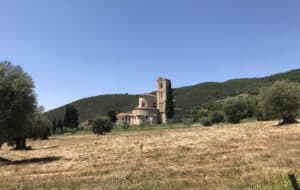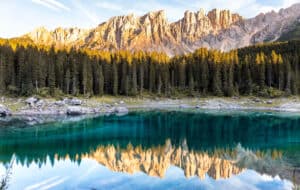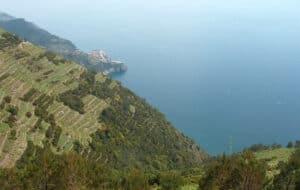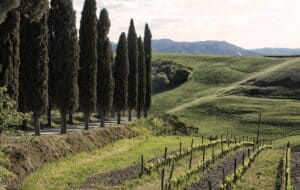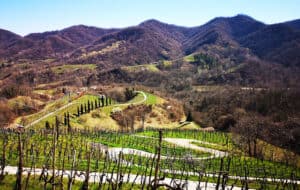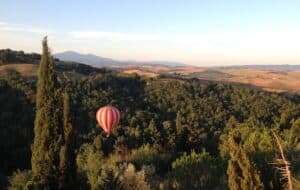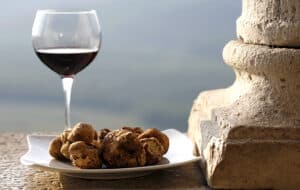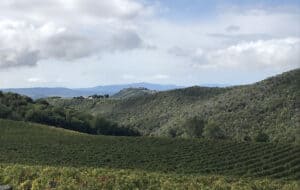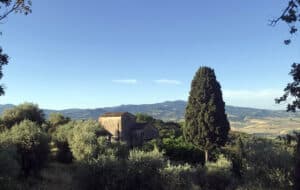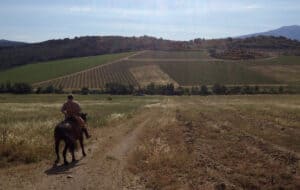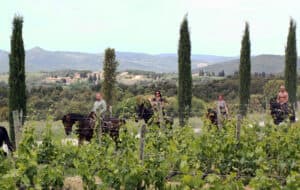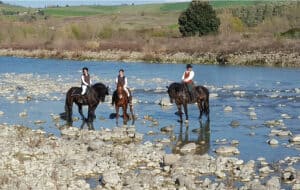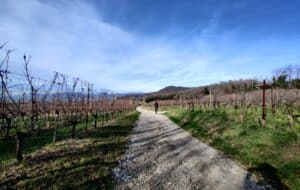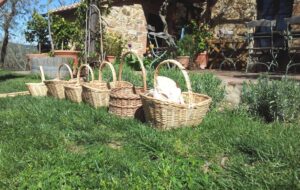Looking south from Montalcino, you can always see the stately skyline of an old ancient volcano: this is Monte Amiata. At 1.738 m (less than 6.000 feet), it is the highest mountain in southern Tuscany and a paradise for hikers and cyclists.
The Holy Mountain of Etruscans
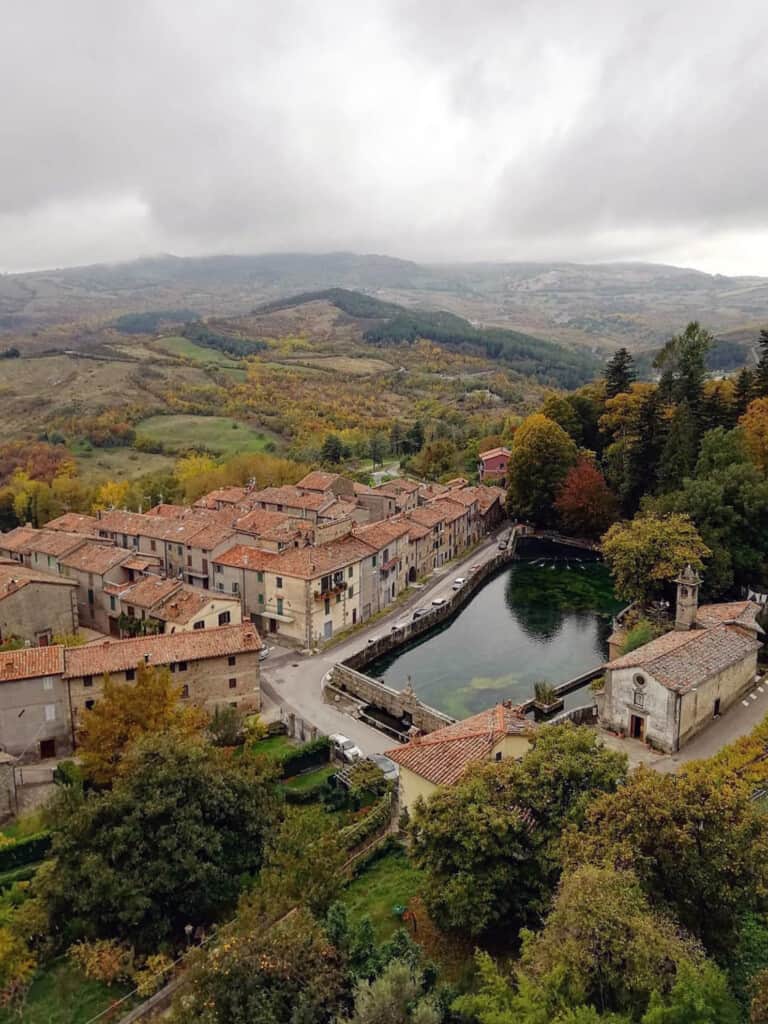
If you love the mountains, Monte Amiata is a must see in the southern part of Tuscany or a nice alternative after many days of sightseeing and wine tastings.
After crossing the Orcia River that is considered the southernmost border of Montalcino, there is just a 30-minute drive to get to the top of this magical mountain. You will have the chance to admire different Tuscan landscapes and habitats.
Amiata, at the time of the Etruscans, the natives of the area before the Roman age, was considered a sacred place. Only very important people such as “medicine men” and “researchers” were allowed to visit this territory.
Three Levels of Landscape
In the lower part of the Amiata massif, there are still Montecucco DOCG vineyards and lots of olive groves. Actually, the extra virgin olive oil produced in Seggiano is among the best produced in Tuscany and so renowned that it boasts its own denomination for its extra virgin olive oil based on the Olivastra Seggianese variety: the Seggiano DOP.
Driving up the mountain to the imaginary second level, there are the beautiful villages of Castel del Piano, Santa Fiora, and Arcidosso where it is still possible to walk in the medieval city centers without feeling like a tourist. In fact, they are not so known to mass tourism and it is still possible to find little grocery shops and craft shops that have disappeared in other famous villages in favour of restaurants, cafés, and souvenir shops.
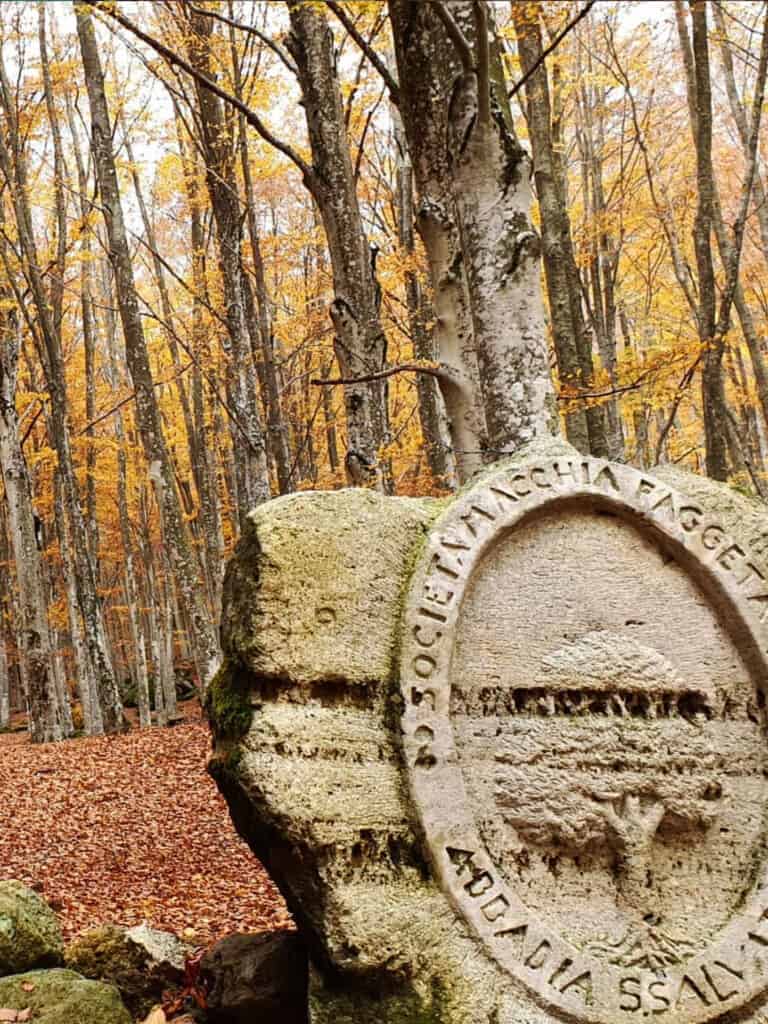
Continuing up the road to the top of Amiata, the landscape changes suddenly. The olive groves fade into chestnut forests that are tended to like gardens. For decades, the main source of income for locals has actually been based on “marroni“, the big chestnuts from these trees and the chestnut flour. These nuts are still used as ingredients in many of the dishes in local restaurants, and, most recently, chestnut craft beer has popped up onto the scene as well.
At around a thousand meters above sea level, there are rare clusters of pine trees and further up there is the Faggeta, a wonderful untouched century-old forest of beech trees. The mood here is unique and impressive. Park on the side of the road and take a few steps into this cathedral of nature: the silence is palpable and the majesty of these tall and strong trees leaves you speechless. It is no coincidence that Amiata Mountain was considered a holy place by the Etruscans, the natives of Tuscany, more than three thousands years ago, and only medicine men, shamans, and few other people were actually allowed to live here.
An Outdoor Activity Paradise
During the summer, the highest section of the slope and the peak are popular destinations for people from nearby villages to escape from the hot weather that can get to be boiling hot during July and August in Tuscany. Prato delle Macinaie, Prato della Contessa, and Cantore are splendid mountain pastures just a few hundred meters below the peak. When it snows in winter, these are the starting points of the chairlifts that serve the seven ski runs on Amiata.
If the winter is the kingdom of snow for skiers and kids with sleds, summer is for downhill cyclists, mushrooms hunters, trail runners, and walkers.
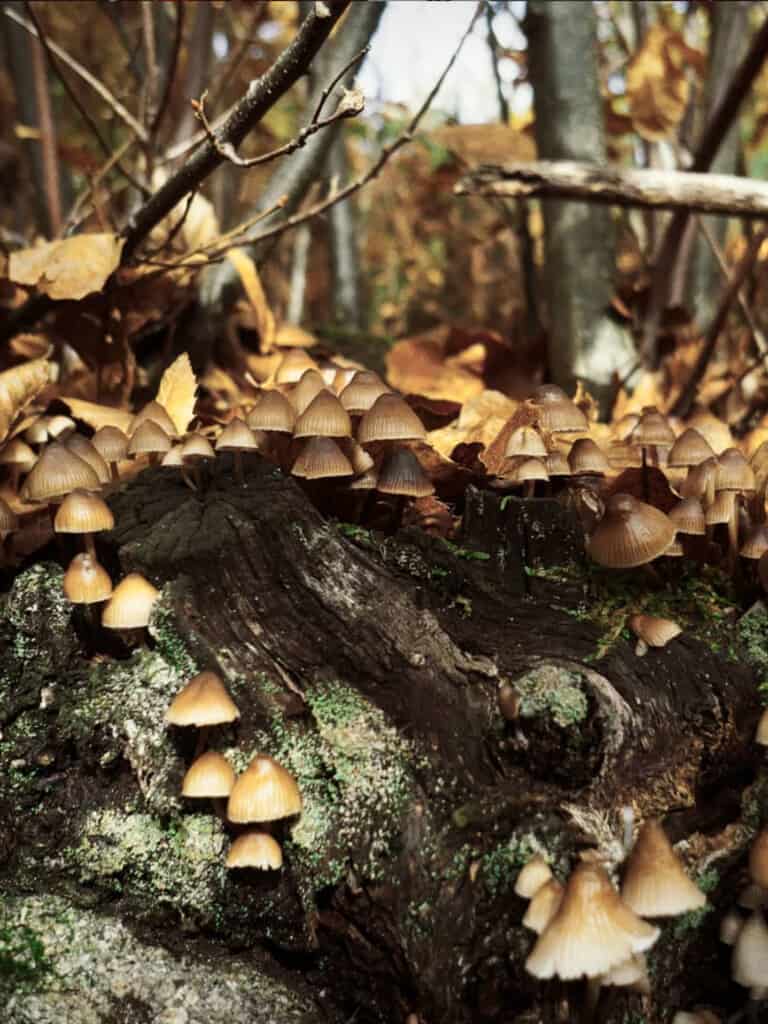
Finally we reach the peak where a few restaurants open seasonally welcoming the guests with typical dishes based on game, chestnuts, polenta, and mushrooms. The Croce al Redentore, the cross on the top, is enormous and from its base it is possible to admire the view towards the south. On clear days, it is easy to recognize the islands of the Tuscan archipelago to the southwest.
The Mines
On Monte Amiata ancient traces of mining have been found dating back to 3.000 years BC. But documents about mining in the area for the extraction of mercury only start from the Middle Ages with a significant increase during the XIX and XX centuries.
Nowadays, it is really fascinating to visit one of the many sites that have been restored and equipped for visitors. Among the most interesting sites that we always suggest to visit, especially with kids, is the one in Abbadia San Salvatore where you can join the guided tour on one of the old restored trains inside the underground tunnels.
